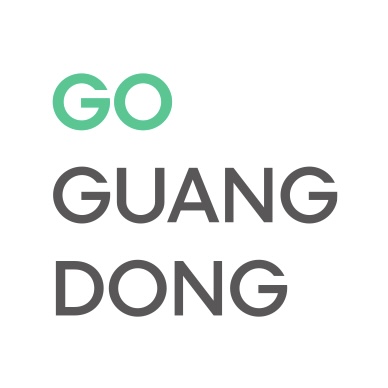GO Guangdong Route:
Gongyuan Orchard→Genzi Digital Lychee Demonstration Park→Baiqiao Longan & Lychee Cooperative→Baiqiao Service Area
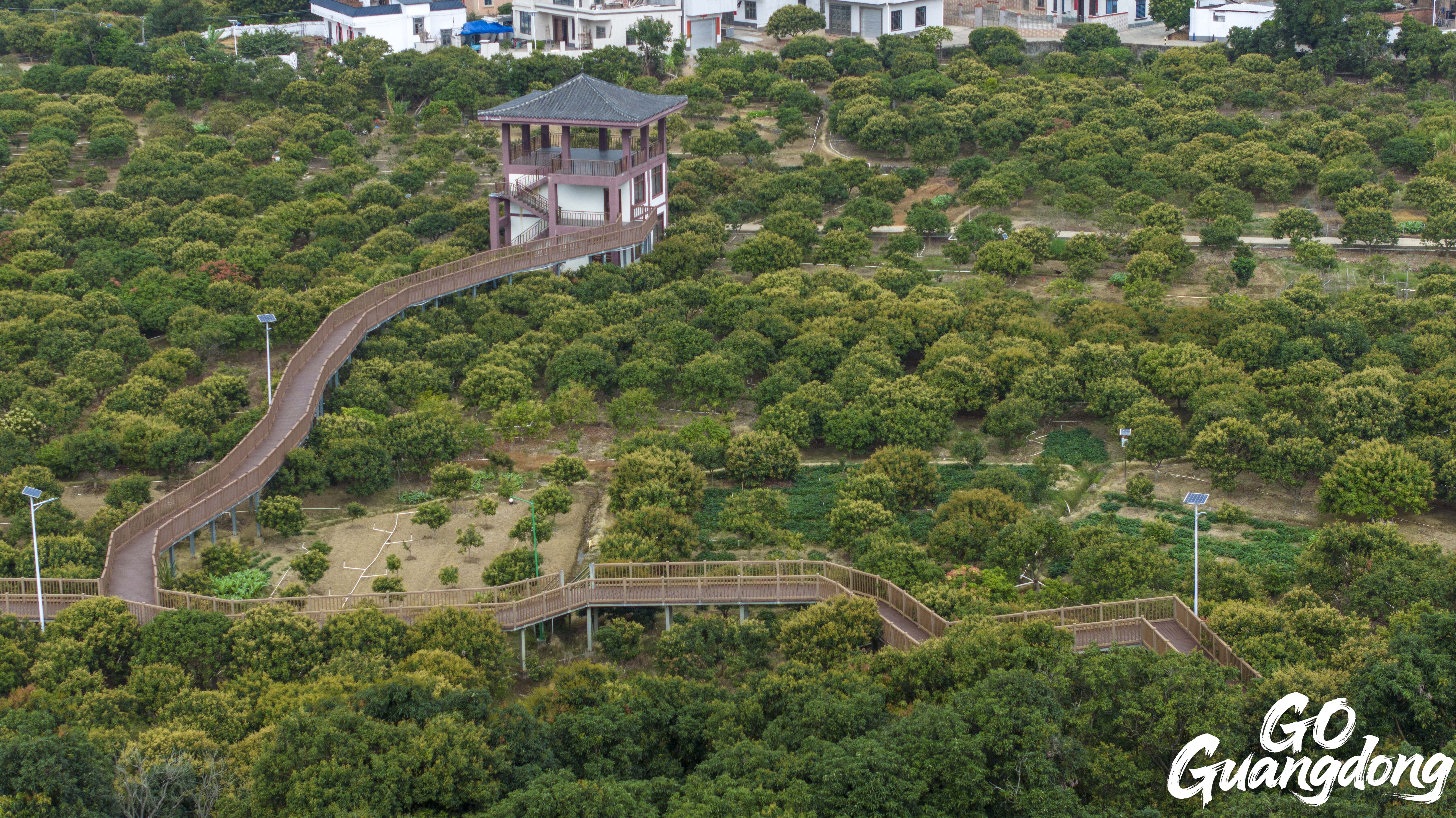
Genzi Town, Gaozhou County-level City, Maoming City, Guangdong Province
Maoming City, located in Guangdong Province, is renowned as the “Lychee Capital of China”, as it boasts the largest production scale of lychees in the country. In the rolling hills of Maoming, a quiet agricultural revolution is unfolding. For more than two thousand years, Maoming’s lychees have traveled from the imperial courts of ancient China to the shelves of local supermarkets.
In Genzi Town, visitors can not only savor the sweetness of various lychee varieties but also witness how the lychee industry thrives through a blend of tradition and cutting-edge science. Centuries-old lychee trees coexist with AI-powered orchards, while farmers' cooperatives export lychee ice cream to Europe. This unassuming region, home to 4,700 hectares of lychee groves and an annual yield of 60,000 tons, leads the country in both production scale and quality.
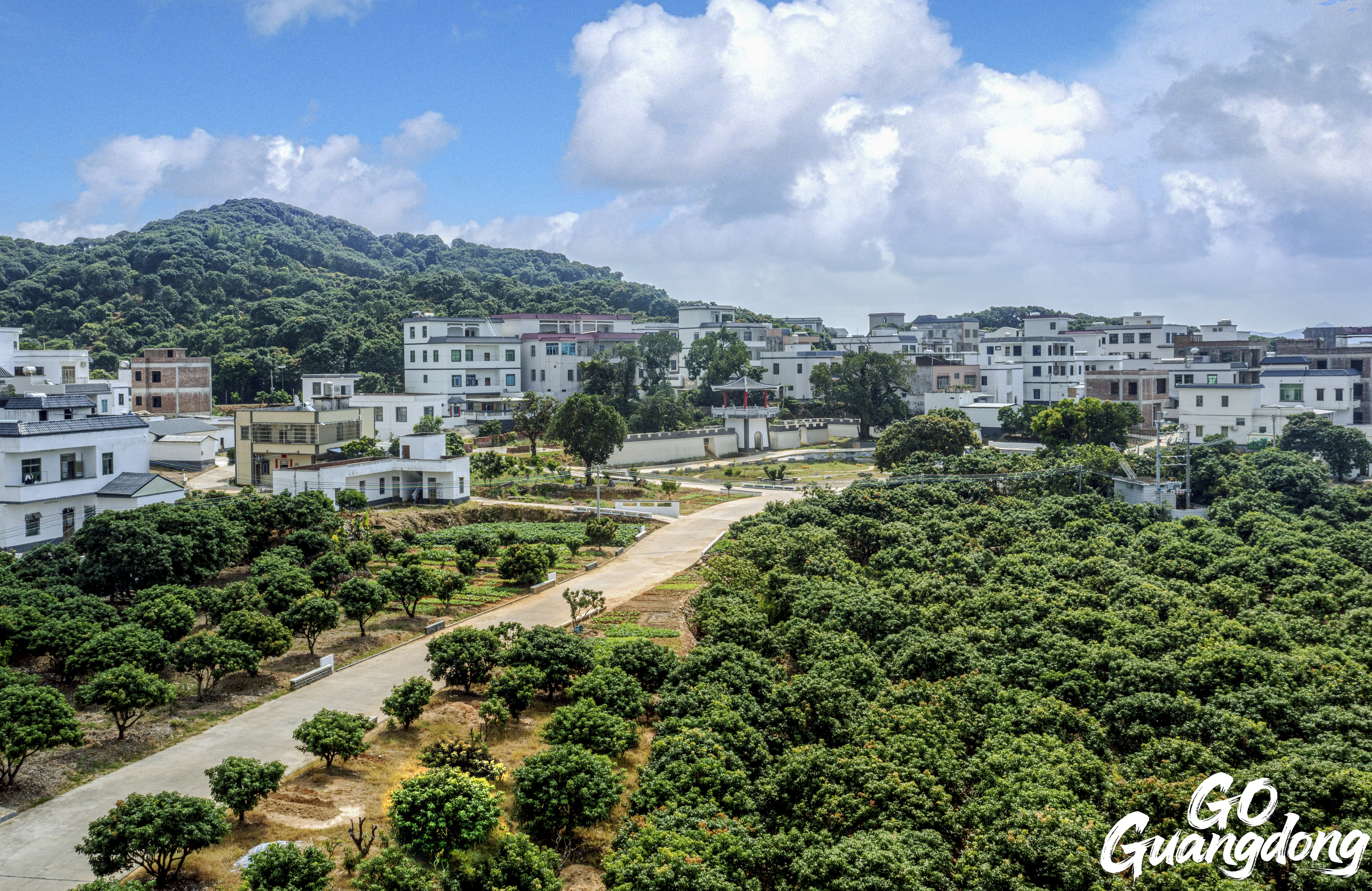
The houses and abundant lychee trees in Baiqiao Village create a beautifully harmonious countryside view.
Gongyuan Orchard: A living museum of thousand-year-old lychee heritage
At the heart of this transformation lies Gongyuan Orchard, a living museum where gnarled trunks of 1,300-year-old trees stretch toward the sky. Spanning about 5.3 hectares, the orchard holds one of China’s most remarkable collections of ancient lychee trees. Among its 92 ancient trees—90 lychee and 2 jackfruit—the average age is 370 years, with the oldest exceeding 1,300 years.
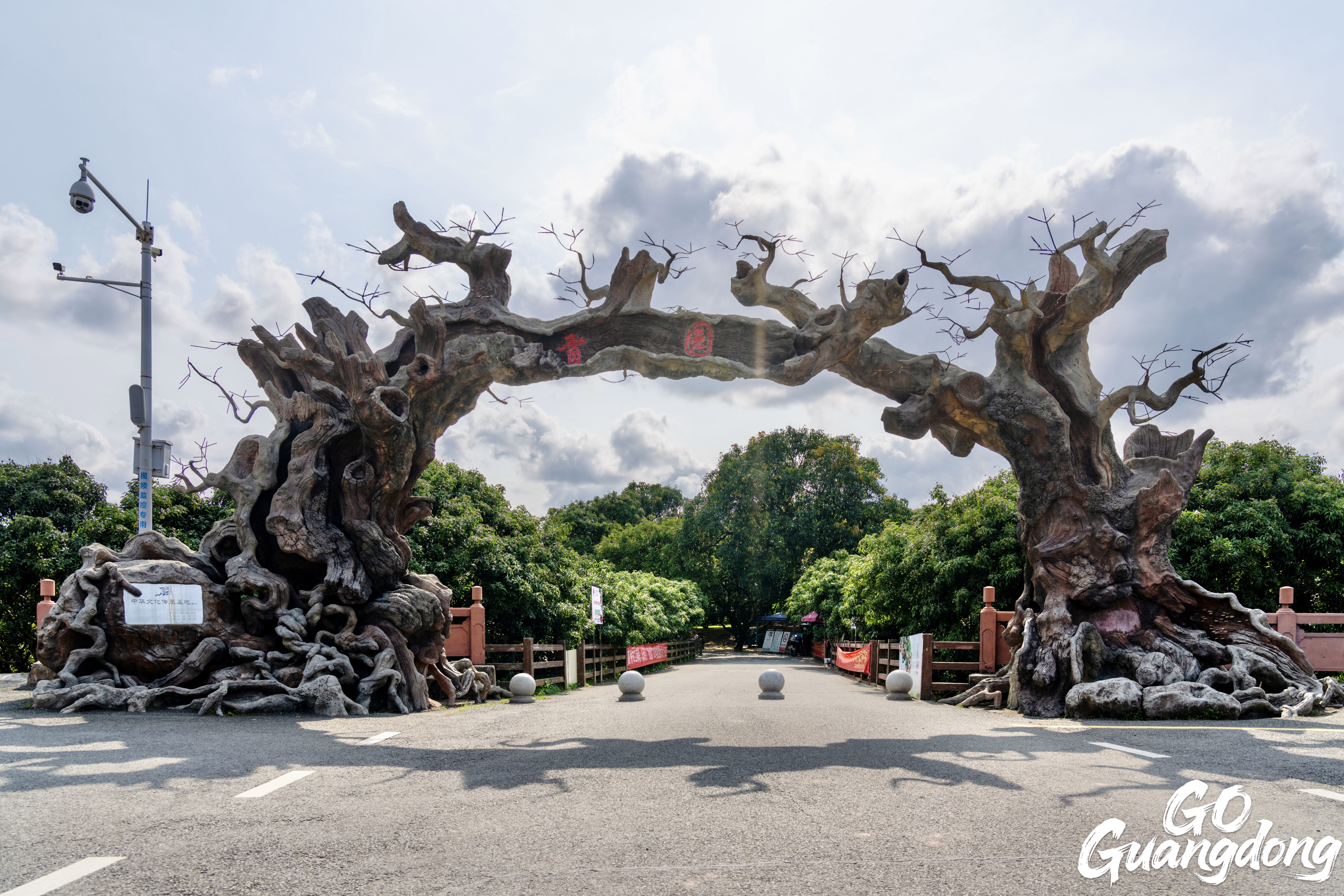
The entrance of Gongyuan Orchard
One of the most iconic trees, nicknamed the “Thousand-Armed Guanyin” (千手观音) is over 600 years old. Its thick trunk branches into elegant, balanced limbs, resembling Guanyin, a bodhisattva in Mahayana Buddhism, with thousands of arms.
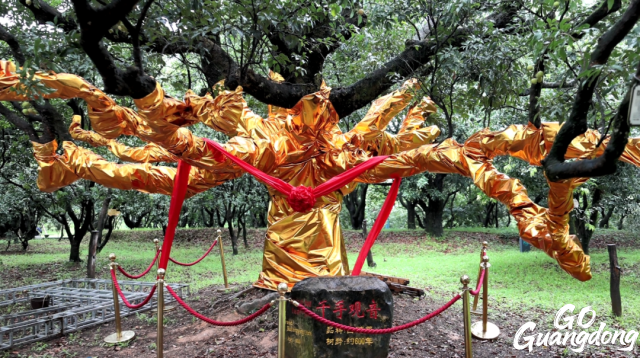
“Thousand-Armed Guanyin” lychee tree (Photo by 南方农村报)
Though compact, the orchard is renowned as one of China’s most historically rich and botanically diverse lychee groves, praised for notable distinctions, namely, the largest preserved area, the longest history, the best preservation, the most ancient trees, and the greatest variety of lychee cultivars. Nearly ten varieties thrive here, including Feizixiao, Baitangying, Zhonghuahong, Baila, Heiye, Guiwei, Nuomici, and Xianjinfeng.
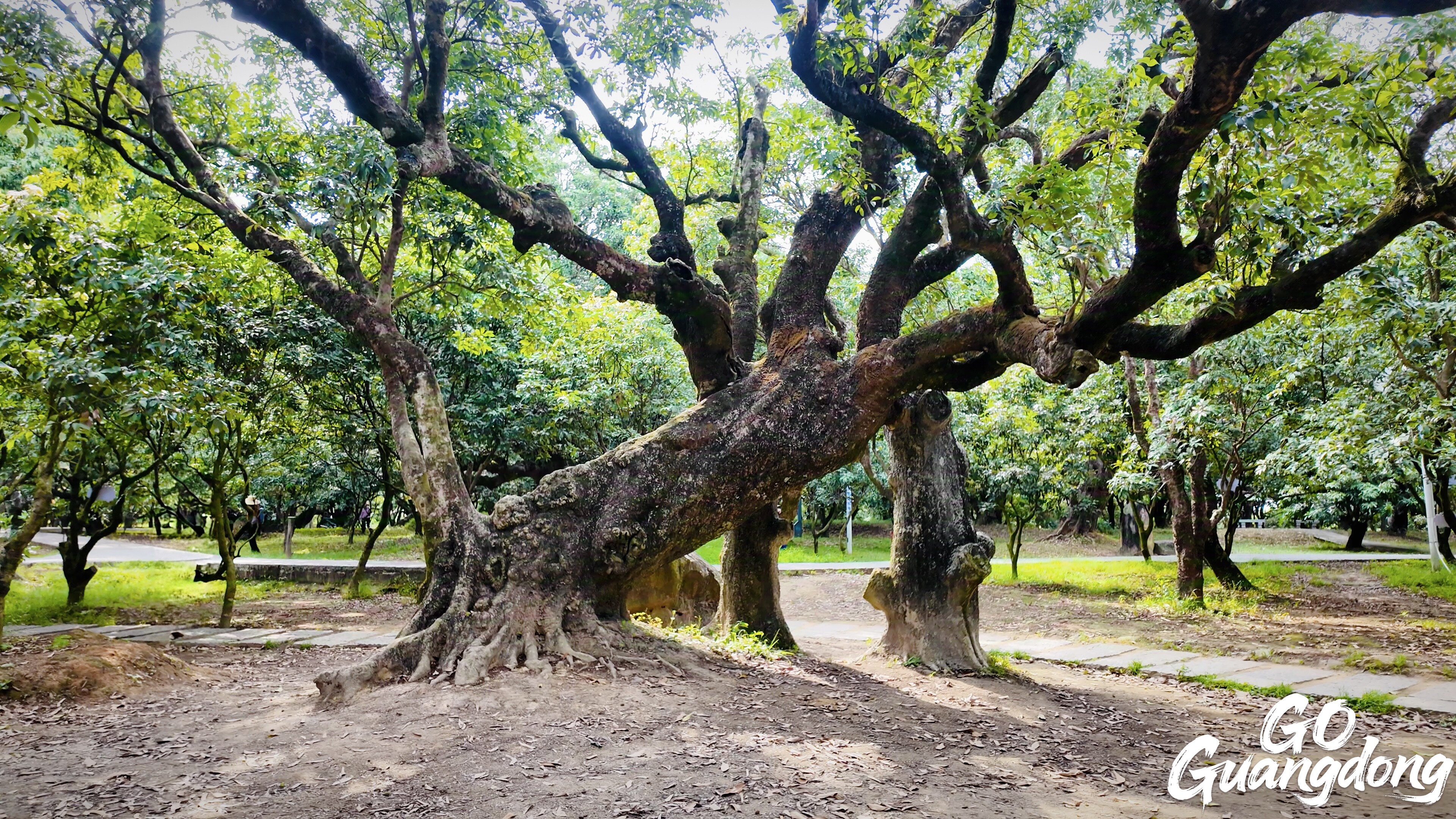
An ancient lychee tree that bears the Baitangying lychees.
The history of the orchard dates back to the Tang Dynasty (618–907), during which a well-known story is said to have taken place. Over a thousand years ago, Emperor Tang Xuanzong established a courier relay to transport fresh lychees from the Gongyuan Orchard to please his beloved concubine, Yang Yuhuan. This extravagant endeavor inspired Tang poet Du Mu to write: “A horse gallops at full speed, and the concubine giggles—who knows it's lychees coming?” Since then, lychees have symbolized luxury and romance in China, with one variety even named “Smiling Concubines” (Fei Zi Xiao in Mandarin).
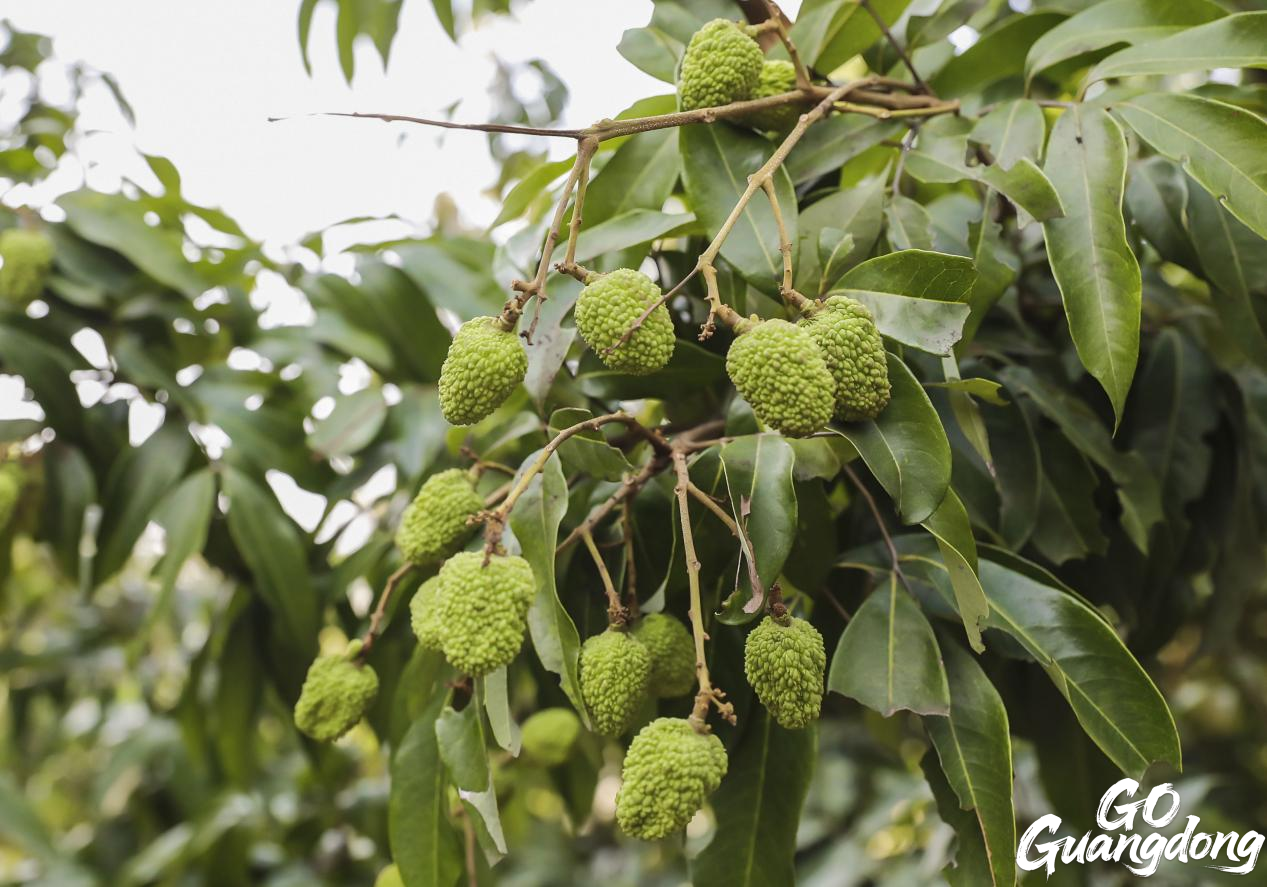
The lychee fruit appears green and hard before it gets mature.
These ancient trees, witnesses of history, are well cared for by local villagers. He Shuzhi, a long-time orchard caretaker, has spent years protecting them, including pest control, pruning, and trunk reinforcement. He treats each tree like a respected elder. In 2022, he became one of Guangdong's first official "Ancient Lychee Tree Guardians".
He notes their oldest tree which is around 1,300 years old bears exceptionally sweet lychees, proving that with age comes richer flavor, much similar to fine wine.
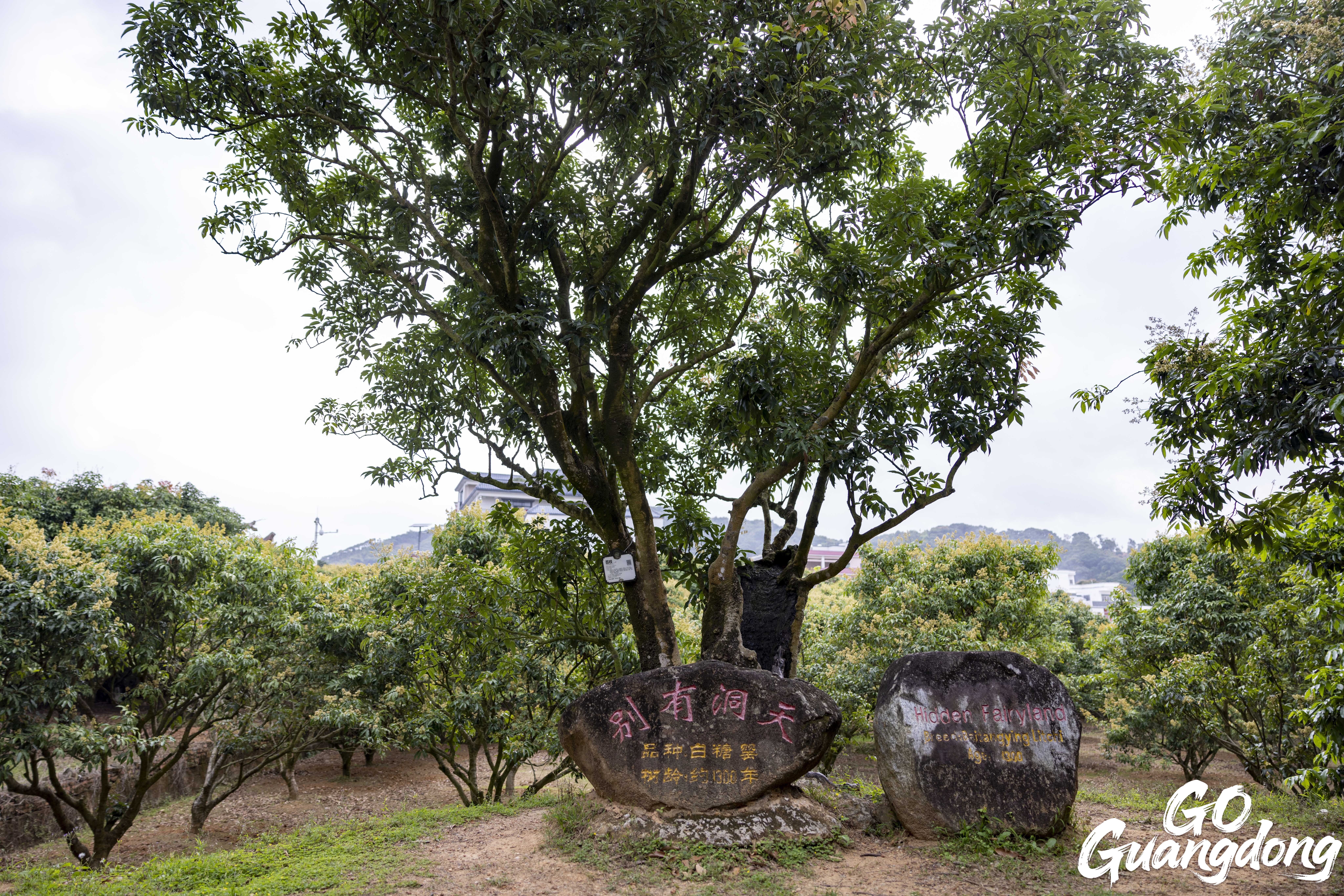
The lychee tree “Hidden Fairyland” is around 1,300 years old.
Genzi's natural environment enhances its lychee flavor. It has a subtropical monsoon climate, with average annual temperatures of 22–23°C and over 1,800 hours of annual sunlight, ideal for lychee photosynthesis and sugar accumulation. Its red and sandy loam soil, abundant in potassium, phosphorus, and magnesium, aids root development and fruit nutrition, especially in sugar transport and buildup.
The National Lychee Germplasm Repository in Genzi Town has amassed over 700 genetic varieties, creating a genetic database for the industry.
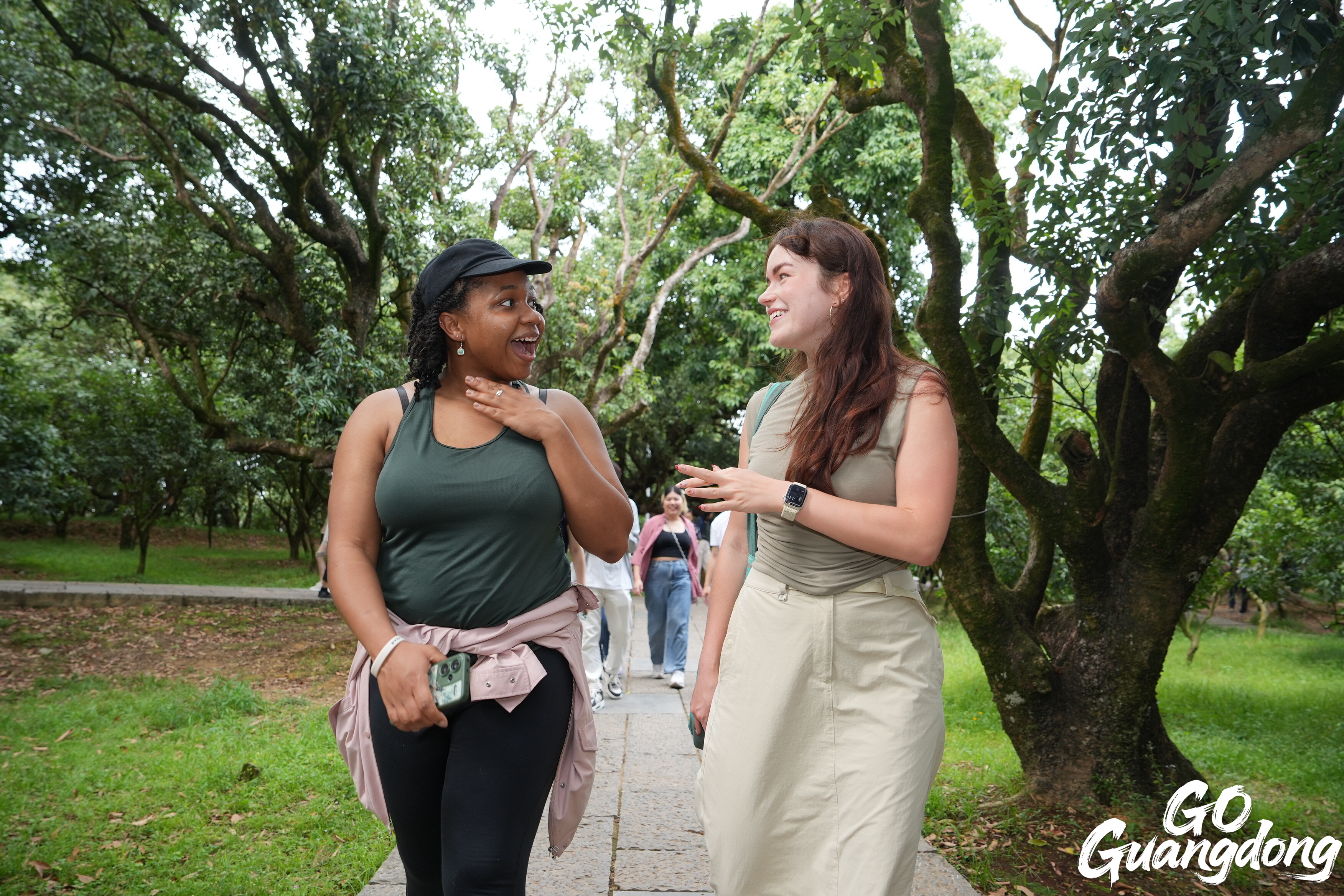
Foreign visitors visiting Gongyuan Orchard.
Digital technologies reshape lychee farming
In Genzi Town, you can observe how technologies are transforming farming in China. Local agribusiness leaders and Alibaba Cloud have jointly developed smart agriculture, which is widely used in various lychee gardens. By integrating big data, AI, and IoT technologies, lychee cultivation here has shifted from being weather-dependent to data-driven.
The orchards feature smart systems to monitor tree growth, detect pests and diseases via AI, and manage irrigation and fertilization. Real-time data on soil, light, and temperature helps predict fruit sugar levels and best harvest time.

Drones used for patrolling the orchard, and the intelligent equipment on the ground can analyze the status of litchi trees. (Photo by Maoming Daily)
A Sun Yat-sen University research team has introduced a smart patrol system, where drones as “eyes” and the AI system as the “brain”, enabling closed-up digital management. Drones can patrol up to about 50 hectares per day—five times faster than manual checks—and one drone can cover 133 hectares.
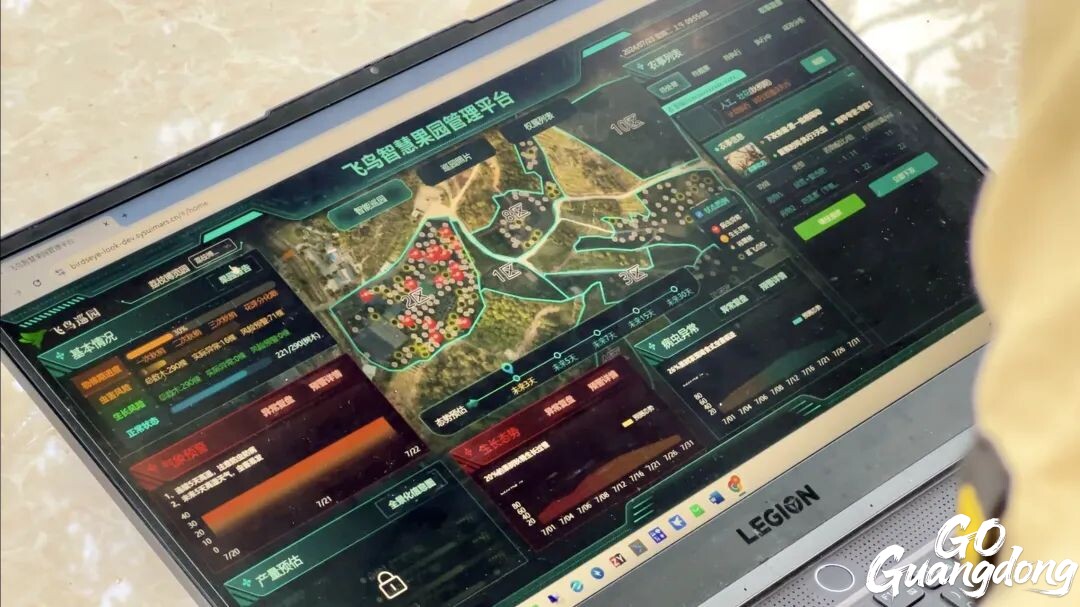
The AI platform they use for drone monitoring. (Photo by Maoming Daily)
High-resolution tree images are captured , and AI algorithms analyze growth indicators and detect pests or diseases with up to 95 percent accuracy, significantly improving orchard management efficiency.
Baiqiao Village: Cooperative innovation brings prosperity to lychee farmers
Baiqiao village, a subsidiary of Genzi Town, dedicates 87 percent of its cultivated land (453 hectares) to lychee farming, with nearly every household involved. This focus has driven significant wealth, producing a per capita net income of 51,000 RMB in 2022.
Central to this success is the Baiqiao Longan & Lychee Cooperative, a rural cooperative established by villagers He Dawei and Luo Zhixia. A rural cooperative is a social and economic model in which rural laborers or production and business units voluntarily pool resources and share risks and benefits to achieve common economic objectives. Their company, Gaozhou Fengsheng Food, has patented a lychee peeling machine that increases efficiency tenfold compared to manual methods.
A farmer beamed while holding freshly harvested lychees at Gongyuan Orchard.
The cooperative ensures farmers have a stable income by offering a guaranteed price that is 2-3 RMB per 500 grams higher than the procurement price. It directly supports over 300 smallholder farmers and benefits more than 2,000 households. In 2022, the cooperative’s revenue reached 13.2 million RMB, with members averaging a net income of 55,000 RMB.
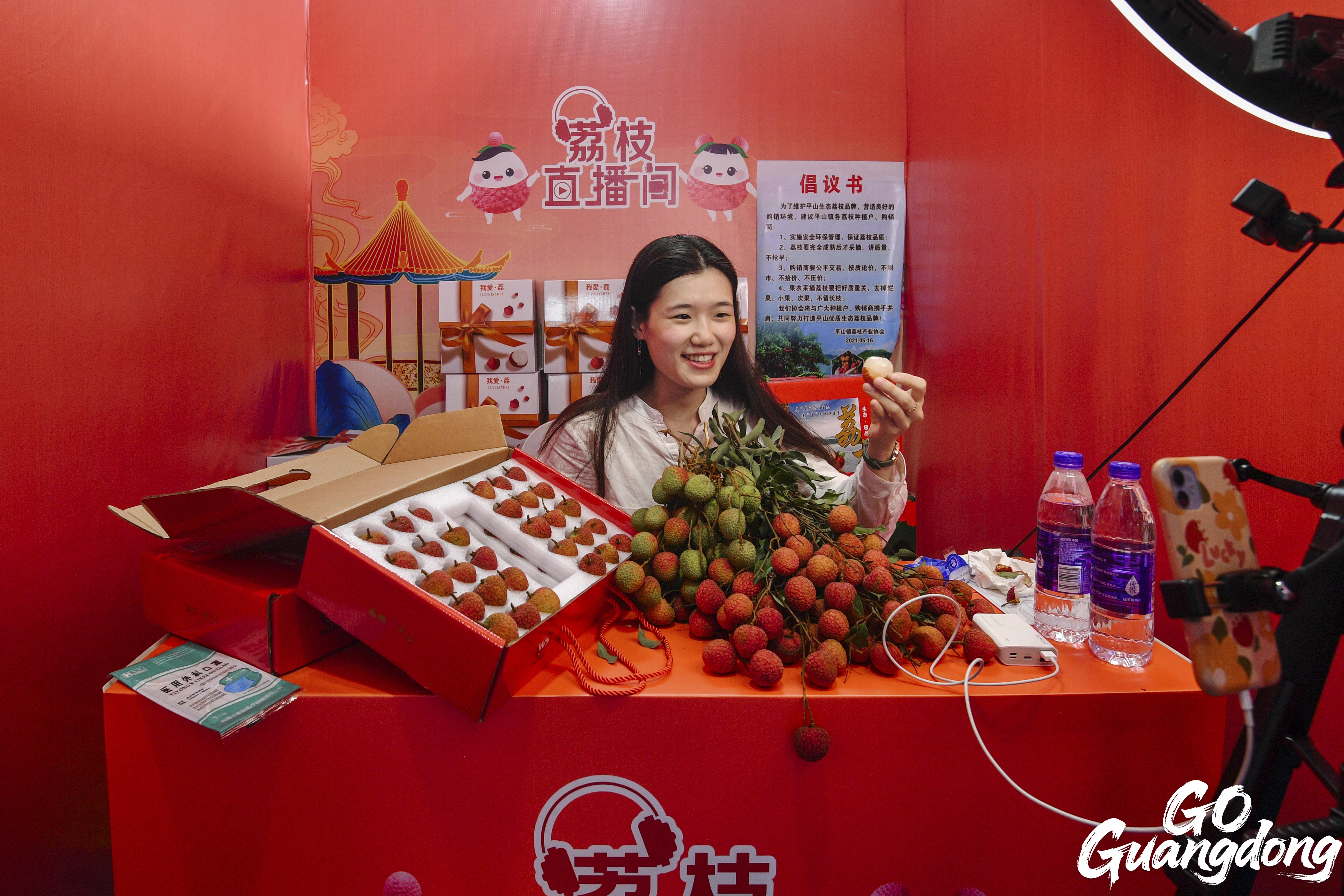
Live streaming promoting sales of lychees in Gaozhou.
In addition to selling fresh lychees, the cooperative extends the value chain via partnerships, producing dried lychees, wine, ice pops and beverages. This boosts added value and turns lychee into a year-round cultural export, leveraging Gaozhou's 12.22 billion RMB lychee brand value, its 129 major processing enterprises, and various lychee ice pops on sale.
Baiqiao Expressway Service Area: Guangdong's first lychee-themed service area
On May 20th, Guangdong debuted its first lychee-themed service area with the transformation of Baiqiao Service Area on the Baotou-Maoming Expressway. Formerly known as Maoming Service Area, this cultural and culinary landmark now straddles the boundary between Genzi Town and Fenjie Town in Gaozhou, revitalized after a major overhaul launched in early 2024.
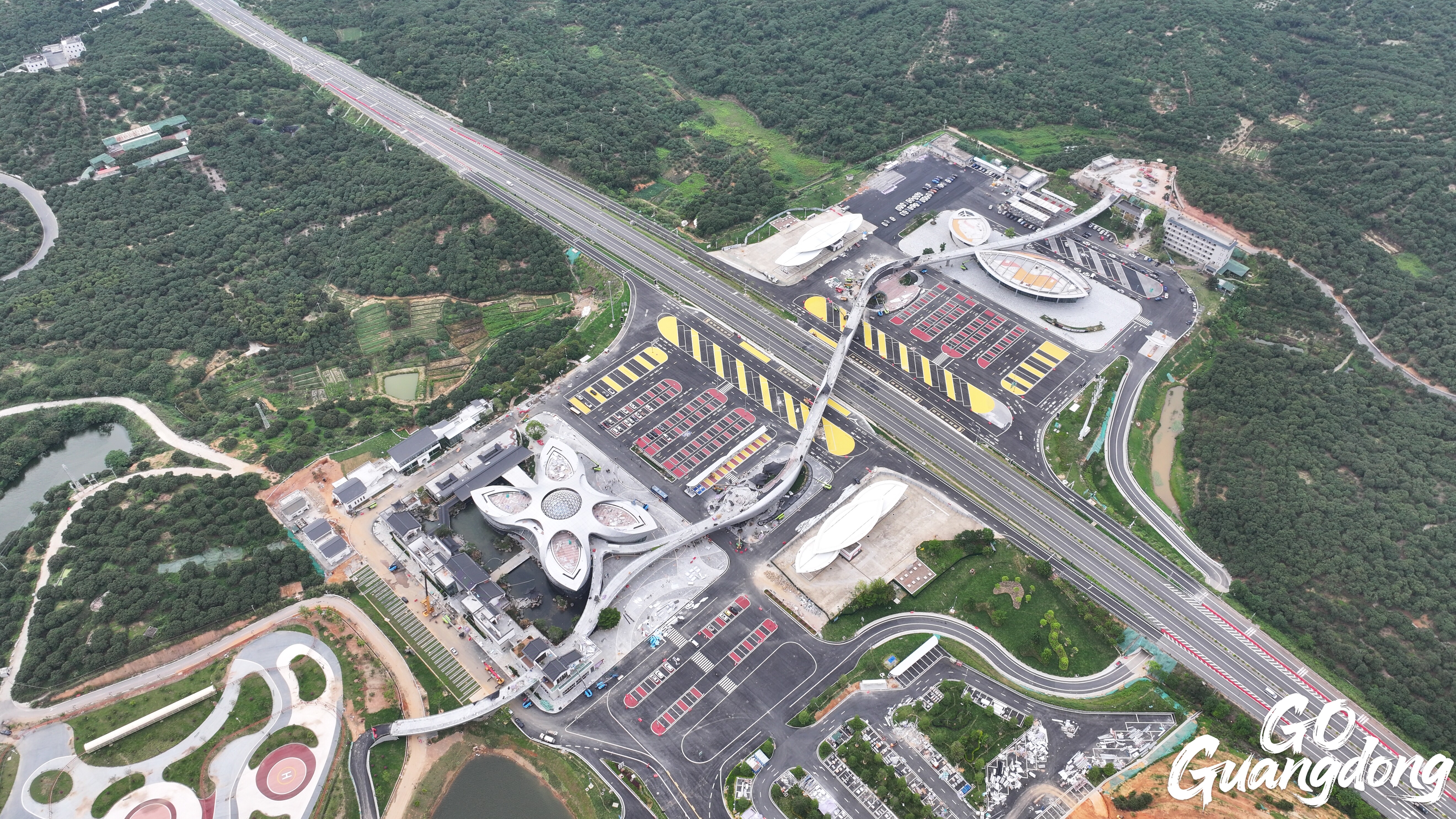
An aerial photo of Baiqiao Service Area.
Inspired by the lychee blossom, the design of the structure makes it a distinctive landmark. It now functions as a cultural and commercial center showcasing lychee heritage, featuring local agricultural products, and serving as a gateway for rural tourism.
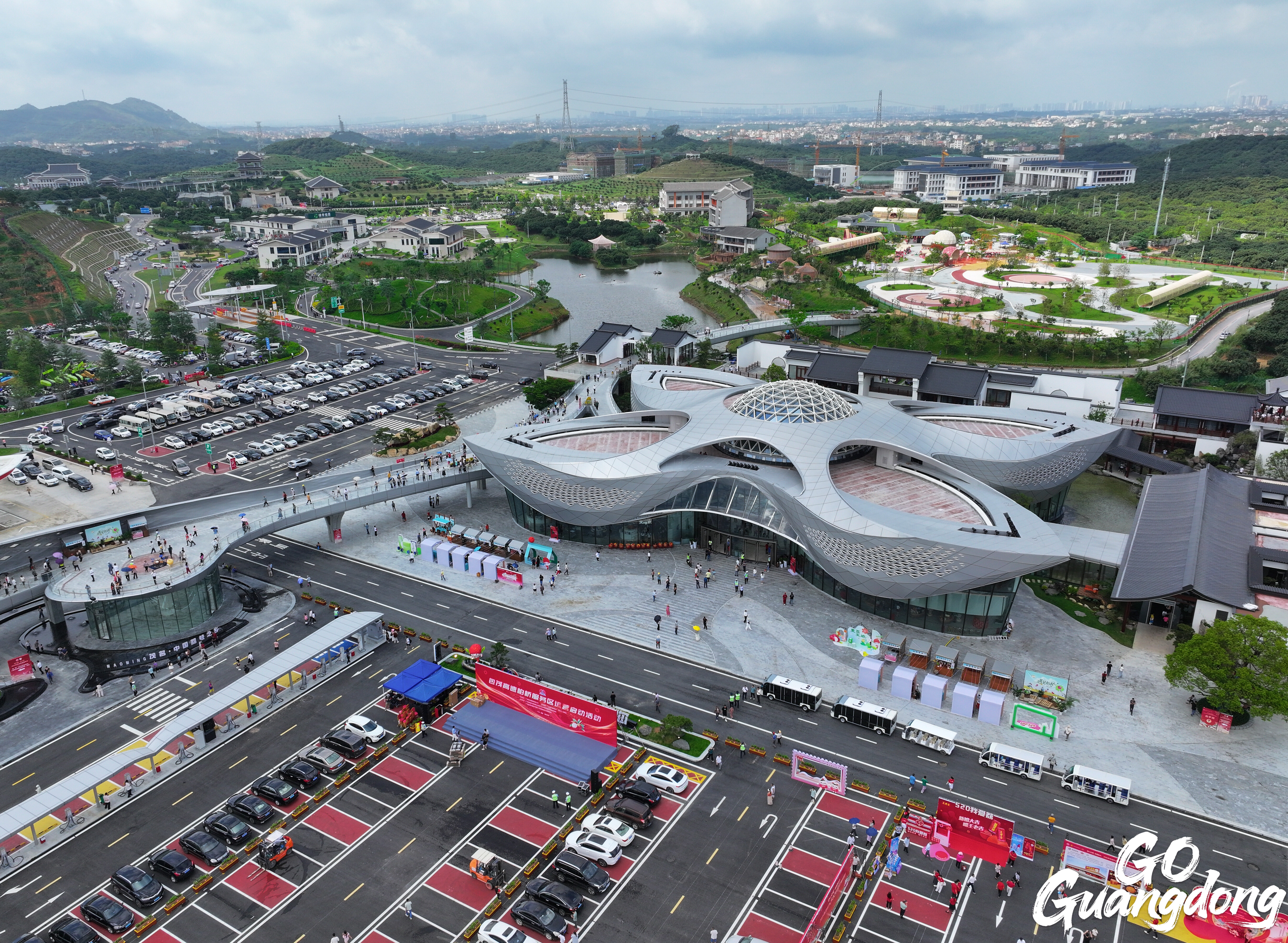
The design of the structure is inspired by the petals of a lychee flower.
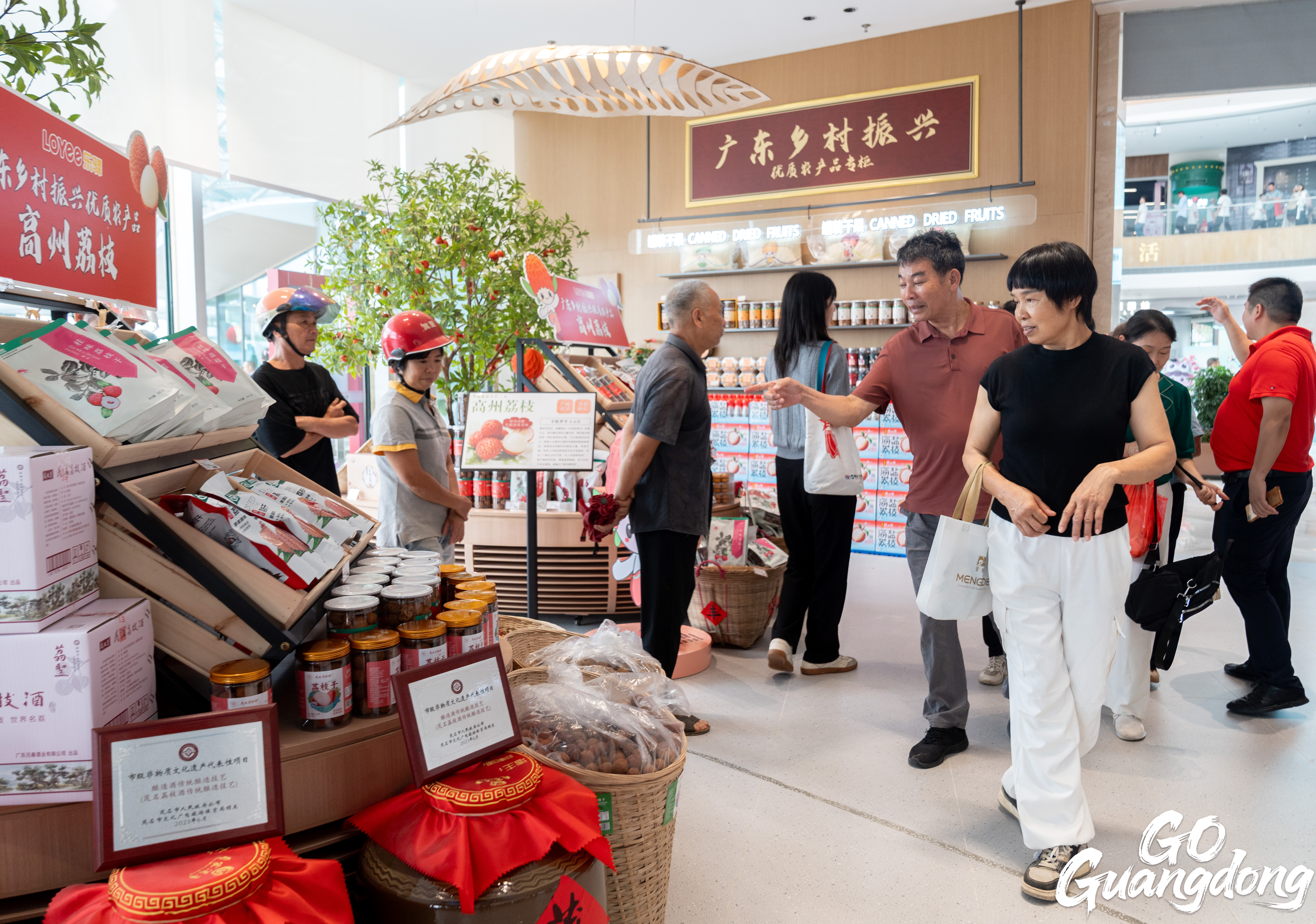
Booths selling local agricultural products at the service area.
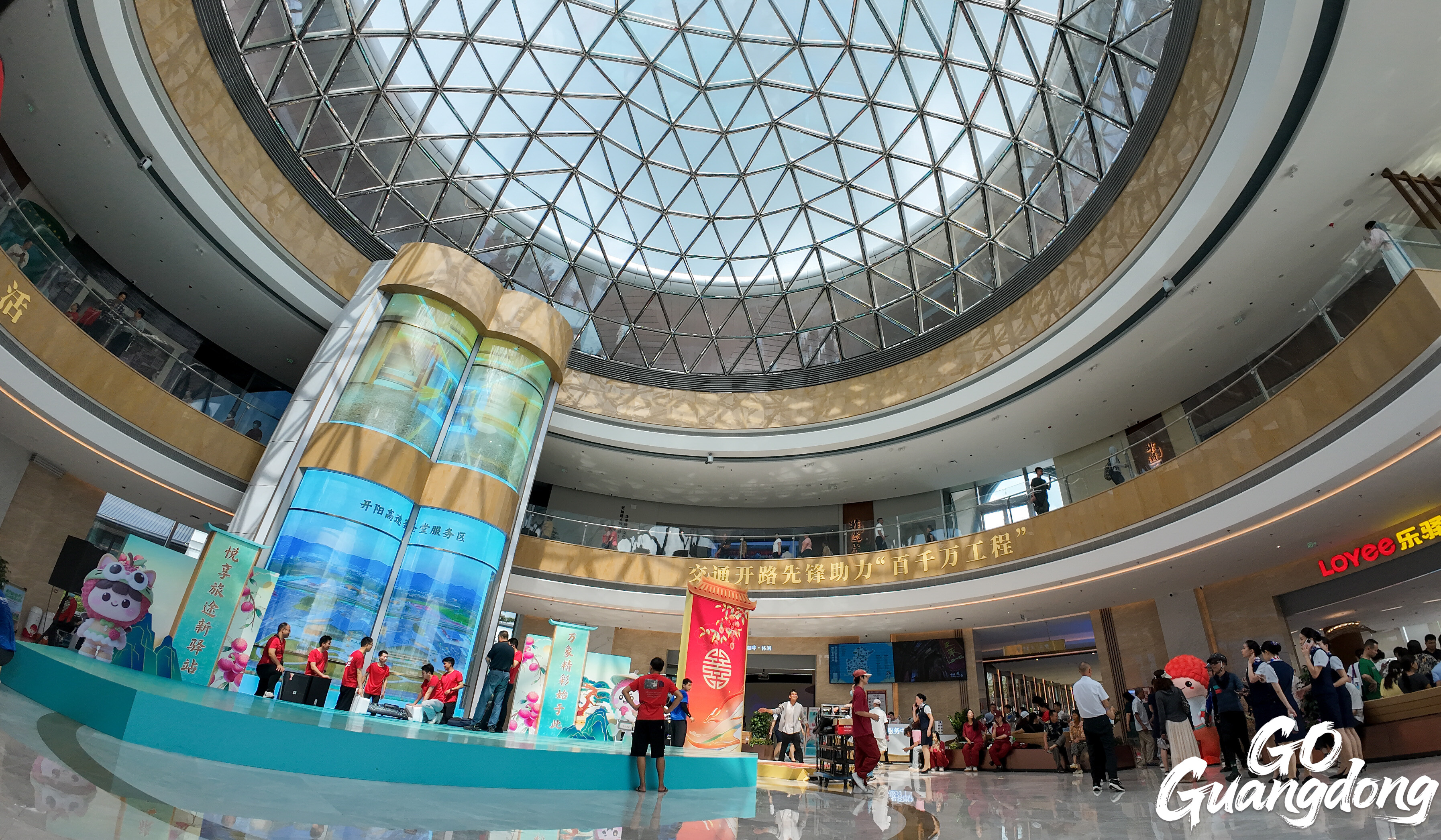
Interior design of Baiqiao Service Area.
Visitors can experience traditional crafts, including woodcut art, Chinese herbs, and ceramic workshops in the cultural zone. Its prime location places Lychee Park just 300 meters away, and the China Lychee Museum is within a 500-meter walk from the service area exit.
The complex also highlights over 1,000 local specialties, including dried lychees and longan pulp. Additionally, it features dedicated live streaming stations that support farmers by connecting online and offline sales channels.
Reported by Ding Hefei
Edited by Yin Juewen



